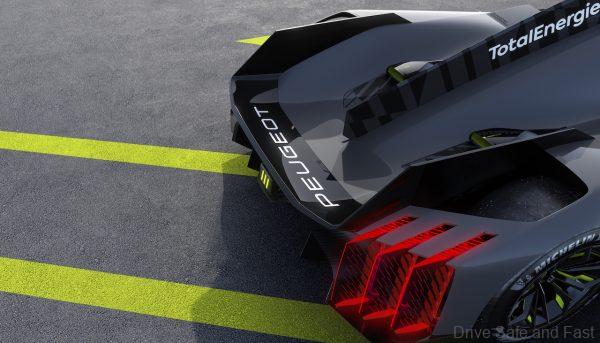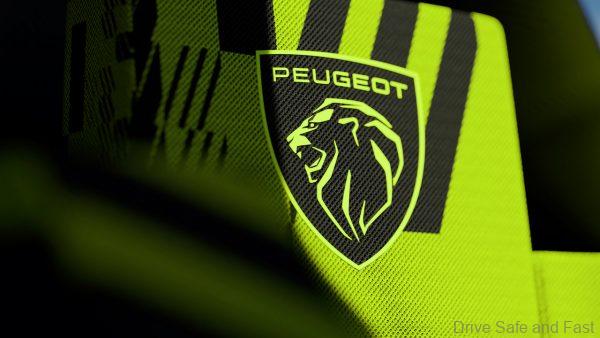2 of these Peugeot 9X8 cars will race at the 2022 FIA World Endurance Championship.
The new Hypercar category has triggered some excitement for manufacturers in the endurance discipline. One brand that will be committing to it is Peugeot, which just revealed the completely wingless 9X8 prototype. The 9X8 will be competing at the 2022 FIA World Endurance Championship.
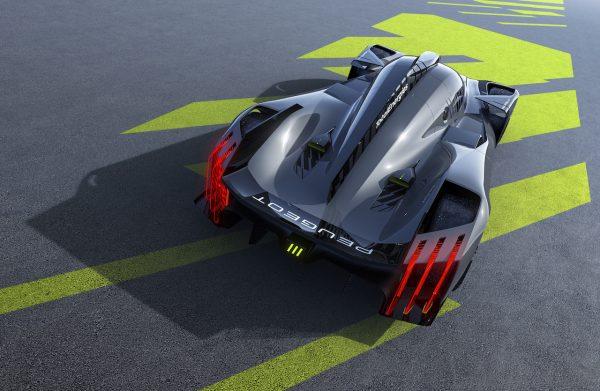
Propulsion for the Peugeot 9X8 will come from a hybrid power unit. An all-wheel drive setup is expected on this racer with no rear wing. Rear wings have been a part of endurance racing since the Chaparral 2F was raced at Le Mans in 1967.
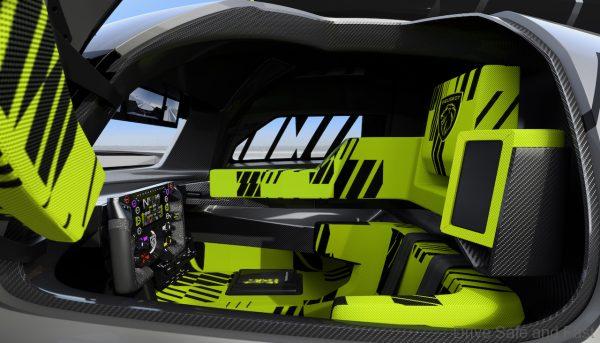
The 9X8 aims to challenge this convention while conforming to the new Le Mans Hypercar class rules.
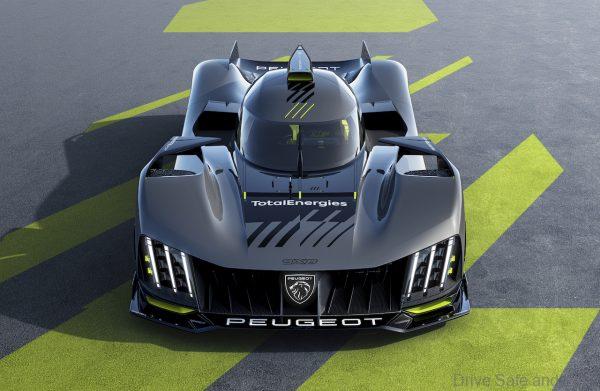
The Peugeot 9X8 will come with a 2.6-litre V6 turbo engine with 680 horsepower. A 200kW motor-generator will be mounted near the front of the car with a 7-speed sequential gearbox and a 900 volt battery making up the rest of the system.

Here’s the press release with more information.
PRESS RELEASE
PEUGEOT has taken the wraps off the new 9X8, its latest-generation Hypercar challenger which is poised to make its competitive debut in the FIA World Endurance Championship (FIA WEC) in 2022. Powered by a hybrid power unit which drives through all-wheel drive transmission, this hyper-efficient prototype fits perfectly with PEUGEOT’s Neo-Performance strategy which is geared to both its road and racing cars delivering responsible performance. The work of PEUGEOT SPORT’s engineering team and PEUGEOT Design dovetailed like never before to produce the 9X8 which heralds a new era in motor racing due to its flowing lines, the absence of a rear wing and the strong brand identity it exudes. The innovative technical solutions it packs and its catlike stance stand out as unmistakable PEUGEOT hallmarks.
The PEUGEOT 9X8 – the brand’s latest endurance racing contender – is a direct successor to the PEUGEOT 905, winner of the Le Mans 24 Hours in 1992 and 1993, and the PEUGEOT 908, which won the French classic in 2009. The new prototype is poised to continue the make’s long and successful involvement in world-class motorsport with highly competitive cars that feature strong, instantly-recognisable brand identity.
The PEUGEOT 9X8 is a brand-driven project in accordance with its Neo-Performance vision which is founded on combining a premium sporting pedigree with styling excellence, efficiency and technological expertise that can be carried over to road cars.
Unprecedented collaboration between PEUGEOT’s Design and Engineering teams and PEUGEOT Sport is effectively making a decisive difference when it comes to exploring new aerodynamic solutions and styling ideas to create a completely original product line.
The PEUGEOT 9X8’s forms and aerodynamic characteristics are similarly the fruit of the pooled input of the development engineers working under the responsibility of PEUGEOT Sport Technical Director Olivier JANSONNIE and the design team led by PEUGEOT Design Director Matthias HOSSANN.
Their approach was governed by the regulations drawn up by the FIA (Fédération Internationale de l’Automobile) and ACO (Automobile Club de l’Ouest) for new the Le Mans Hypercar (LMH) class which succeeds from endurance racing’s former LMP1 headlining category. The greater flexibility allowed by the sport’s new technical rules regarding aerodynamics permits radical new thinking that favours the emergence of innovative cars, with scope for the design teams to make an even bigger contribution. PEUGEOT’s engineers and designers effectively took advantage of this opportunity to invent new creative processes and break away from established codes to produce a Hypercar of a completely new genre.
A name that blends the notion of heritage with forward-thinking
The name of PEUGEOT’s new Hypercar challenger is the PEUGEOT 9X8.
The “9” continues the series employed by the manufacturer for its recent topflight endurance racing cars, namely the PEUGEOT 905 (which raced from 1990 until 1993) and the 908 (2007 until 2011), both of which became icons of the brand.
The “X” refers to the PEUGEOT Hypercar’s all-wheel drive technology and hybrid powertrain which embodies the brand’s electrification strategy in the world of motor racing.
The “8” is the suffix used for all of PEUGEOT’s current model names, from the 208 and 2008, to the 308, 3008, 5008 and, of course, the 508 which very recently passed through the hands of the engineers and designers who crafted the Hypercar to become the first car to sport the Peugeot Sport Engineered label.
Two PEUGEOT 9X8s will contest the 2022 FIA World Endurance Championship.
Unprecedented looks and finish
The car’s future drivers were both surprised and enchanted by the work of the design team…
The 9X8’s front and rear lighting signatures, which take the form of three claw-like strokes, are familiar PEUGEOT trademarks, while the brand’s new lion’s head logo features in backlit form at the front and on the sides of the car. The Selenium Grey and contrasting Kryptonite acid green/yellow highlights of both the body and inside the cockpit echo the colour scheme chosen for the new PEUGEOT SPORT ENGINEERED line which was introduced with the 508 and 508 SW.
Outside, the sculpted wheels contribute to the balanced lines of the car’s uncluttered, sharply-structured flanks, the wing vents reveal the top of the tyres and the perfectly-integrated mirrors contribute to the impression that airflow passes over the car unimpeded.
‘WINGLESS’ – Maximising the potential of the Le Mans Hypercar regulations
The finely-chiselled details of the PEUGEOT 9X8’s rear-end design include the brand’s claw-effect lighting signature, while the lights themselves flank a wide diffusor above which the quip “We didn’t want a rear wing” is written.
Rear wings were first seen at the Le Mans 24 Hours on the Chaparral 2F which contested the race in 1967, so this is the first time their use has been questioned in more than half-a-century. The 9X8’s innovative rear stems from research carried out by PEUGEOT Sport’s engineering team.
Doing away with a rear wing provided the freedom to design the sort of sleek silhouette that hasn’t been seen for decades. Indeed, working hand-in-hand with their engineer colleagues, the designers made the most of the opportunity to create a harmonious blend of dynamic, sculpted shapes which form a clean, sweeping surface between the prominent wheel arches.
Hyper-efficient hybrid powertrain
Since the announcement in September 2020 of PEUGEOT’s involvement in endurance racing’s new Le Mans Hypercar class, the factory in Versailles, near Paris, has been working feverishly on the 9X8.
As planned, the car’s rear-mounted, 2.6-litre, bi-turbo, 500kW (680hp), 90-degree V6 – the internal-combustion engine part of the PEUGEOT HYBRID4 500KW powertrain – has been clocking up kilometres on the bench since April. Meanwhile, the front-mounted 200kW motor-generator unit, seven-speed sequential gearbox and battery are in the process of being assembled in keeping with the bench-testing validation schedule. The powerful, technologically-sophisticated, high-voltage (900 volts), high-density battery is being codeveloped by PEUGEOT Sport and Saft, a subsidiary of TotalEnergies.
Le Mans, a laboratory for PEUGEOT
In addition to its aerodynamic, mechanical and electronic efficiency, the new car will serve to showcase PEUGEOT’s extensive engineering expertise in the uncompromising world of endurance racing. The Le Mans 24 Hours is a notoriously exacting event and the 5,400 kilometres the cars cover in the course of the race is close to the distance covered in a full season of Formula 1, so efficiency and reliability are both vital.




